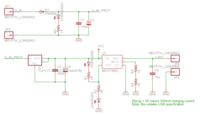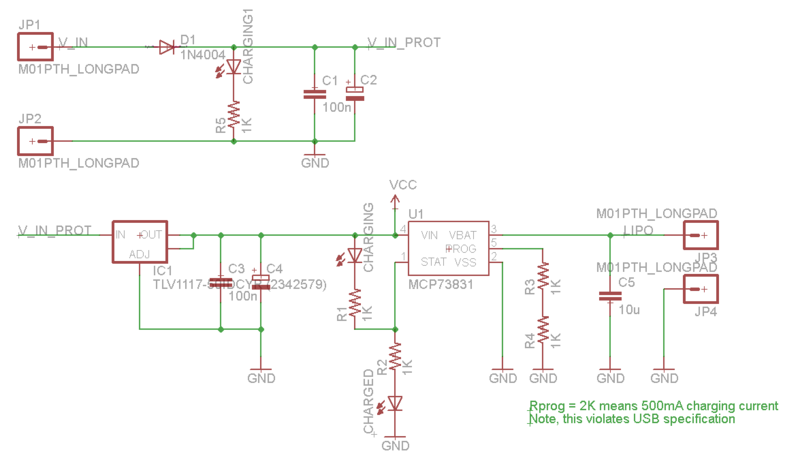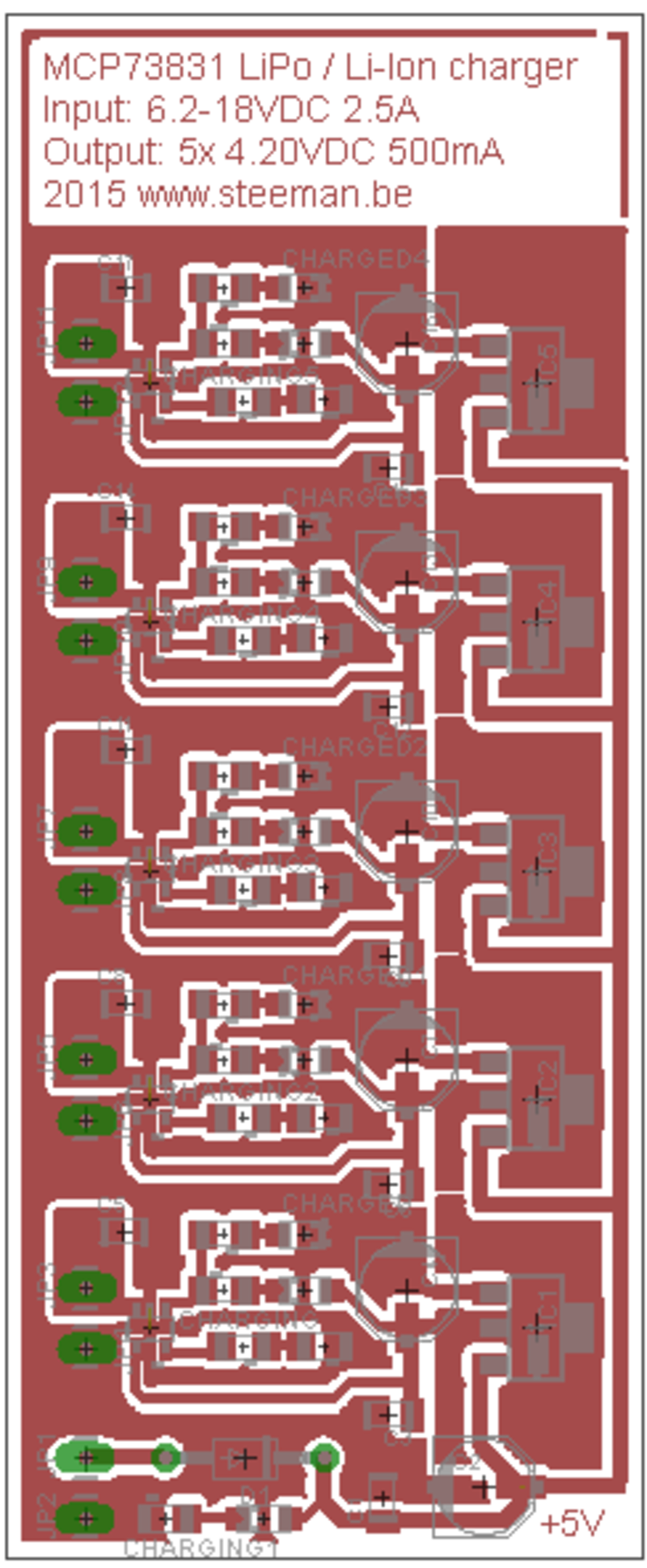5-way LiPo battery charger
 I plan on using a few spare Nokia Li-Ion batteries for my new quadcopter and was in need of a decent battery charger. This project can charge 5 single cell LiPo or Li-Ion (in my case Nokia BL-5C 1020mAh) batteries simultaneously from a single 6-20VDC power source. It is based on Microchip’s MCP73831 integrated charge management IC, which is powered through a 1117 5V regulator.
I plan on using a few spare Nokia Li-Ion batteries for my new quadcopter and was in need of a decent battery charger. This project can charge 5 single cell LiPo or Li-Ion (in my case Nokia BL-5C 1020mAh) batteries simultaneously from a single 6-20VDC power source. It is based on Microchip’s MCP73831 integrated charge management IC, which is powered through a 1117 5V regulator.
Here’s the schematic for a single battery.

Connectors JP1 and JP2 accept 6 to 20V DC of input. Diode D1 protects against reversing the input leads. An LED shows when the input voltage is present.
The input voltage is regulated to 5VDC by C1, an LTV1117-50. This regulated 5V is passed on to the MCP73831 charging IC. This IC comes in 4 different versions; I am using the MPC73831_/2_ version which has a max charging voltage of 4.20V. Charging to a higher voltage will reduce the lifetime of the battery.
The CHARGING and CHARGED LEDs provide a visual indication of the charging status. Resistors R3 and R4 set the charging current, 500mA in this case.
JP3 and JP4 connect to a Li-Ion or LiPo battery.
This is the panellized board supporting 5 batteries.

All soldered up, the board looks like this.
Here the board is charging 5 Li-Ion batteries. At 1020mAh 3.7V each, the charger in total pulls about 1.5A at 6.3V supply voltage. By the way, I didn’t have much success with these batteries (Nokia BLC-5C 1020mAh 1S Li-Ion) powering my Syma X5 quadcopter, flight time is about 20 seconds on each battery. Probably my batteries are just too old, or otherwise Li-Ion isn’t a great battery chemistry to power quads…
Of course I etched my PCB before doing a dry fit of the components on a print-out first, so I got what was coming to me: it turned out most of the passives copied over from another Eagle design file were 0603 instead of 1206. I made an honest attempt to solder on my 1206 components anyway to try to save the board, but with a 12 mil isolated ground poor I had too many shorts. That wasn’t a big surprise so I took my losses, re-designed the board with proper 1206-sized footprints, and re-etched the board. Here’s my 0603 PCB after I de-soldered the components.